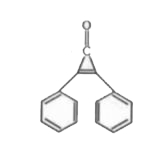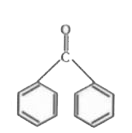Out of CS2 and OCS which have higher dipole moment and why?
To determine which molecule, CS₂ (carbon disulfide) or OCS (carbonyl sulfide), has a higher dipole moment, we can analyze the molecular structures and the electronegativity of the atoms involved.
1. Identify the Structures of the Molecules:
- CS₂ has a linear structure where carbon is bonded to two sulfur atoms (S=C=S).
- OCS has a structure where carbon is bonded to an oxygen atom and a sulfur atom (O=C=S).
2. Electronegativity Consideration:
- Electronegativity is a measure of an atom's ability to attract and hold onto electrons.
- In CS₂, the electronegativity of sulfur (2.58) is greater than that of carbon (2.55), but since both sulfur atoms are identical and symmetrically placed, the dipole moments from each C-S bond cancel each other out, resulting in a net dipole moment of zero.
3. Analyze the Dipole Moments:
- In OCS, the electronegativity of oxygen (3.44) is significantly higher than that of sulfur (2.58). This means that the C=O bond will have a stronger dipole moment than the C=S bond.
- The dipole moment from the C=O bond does not cancel with the C=S bond due to the asymmetrical arrangement of the atoms.
4. Conclusion on Dipole Moments:
- Since CS₂ has a net dipole moment of zero (it is a nonpolar molecule), and OCS has a net dipole moment that is not zero (it is a polar molecule), we conclude that OCS has a higher dipole moment than CS₂.
Final Answer:
OCS has a higher dipole moment than CS₂ because OCS is a polar molecule with an asymmetrical distribution of charge, while CS₂ is a nonpolar molecule with symmetrical charge distribution.
- CS₂ has a linear structure where carbon is bonded to two sulfur atoms (S=C=S).
- OCS has a structure where carbon is bonded to an oxygen atom and a sulfur atom (O=C=S).
- Electronegativity is a measure of an atom's ability to attract and hold onto electrons.
- In CS₂, the electronegativity of sulfur (2.58) is greater than that of carbon (2.55), but since both sulfur atoms are identical and symmetrically placed, the dipole moments from each C-S bond cancel each other out, resulting in a net dipole moment of zero.
- In OCS, the electronegativity of oxygen (3.44) is significantly higher than that of sulfur (2.58). This means that the C=O bond will have a stronger dipole moment than the C=S bond.
- The dipole moment from the C=O bond does not cancel with the C=S bond due to the asymmetrical arrangement of the atoms.
- Since CS₂ has a net dipole moment of zero (it is a nonpolar molecule), and OCS has a net dipole moment that is not zero (it is a polar molecule), we conclude that OCS has a higher dipole moment than CS₂.
OCS has a higher dipole moment than CS₂ because OCS is a polar molecule with an asymmetrical distribution of charge, while CS₂ is a nonpolar molecule with symmetrical charge distribution.
Topper's Solved these Questions
- APPENDIX - INORGANIC VOLUME 1BOOK - CENGAGE CHEMISTRY ENGLISHCHAPTER - APPENDIX - INORGANIC VOLUME 1EXERCISE - chapter-2 Multiple correct answer
2 Videos
- APPENDIX - INORGANIC VOLUME 1BOOK - CENGAGE CHEMISTRY ENGLISHCHAPTER - APPENDIX - INORGANIC VOLUME 1EXERCISE - chapter-2 Single correct answer
3 Videos
- APPENDIX - INORGANIC VOLUME 1BOOK - CENGAGE CHEMISTRY ENGLISHCHAPTER - APPENDIX - INORGANIC VOLUME 1EXERCISE - Exercise very short
70 Videos
- ALKYNESBOOK - CENGAGE CHEMISTRY ENGLISHCHAPTER - ALKYNESEXERCISE - Exercises (Archives - Analytical and Desriptive Type)
4 Videos
- ATOMIC STRUCTUREBOOK - CENGAGE CHEMISTRY ENGLISHCHAPTER - ATOMIC STRUCTUREEXERCISE - Concept Applicationexercise(4.3)
19 Videos
Similar Questions
Knowledge Check
Which has maximum dipole moment ?
A B
B C
C D
D
Which has maximum dipole moment?
View SolutionAmong NH3andPH3 which is expected to have a higher dipole moment and why?
View SolutionWhich out of NH3 and NF3 has higher dipole moment and why?
View SolutionOut of KCI and CaO, which has higher lattice energy and why?
View SolutionOut of Ne and Na+ which has higher ionisation energy and why ?
View SolutionOut of but-1-yne or but-1-ene which has higher dipole moment?
View SolutionOut of but-1-yne or but-1-ene which has higher dipole moment?
View Solution
